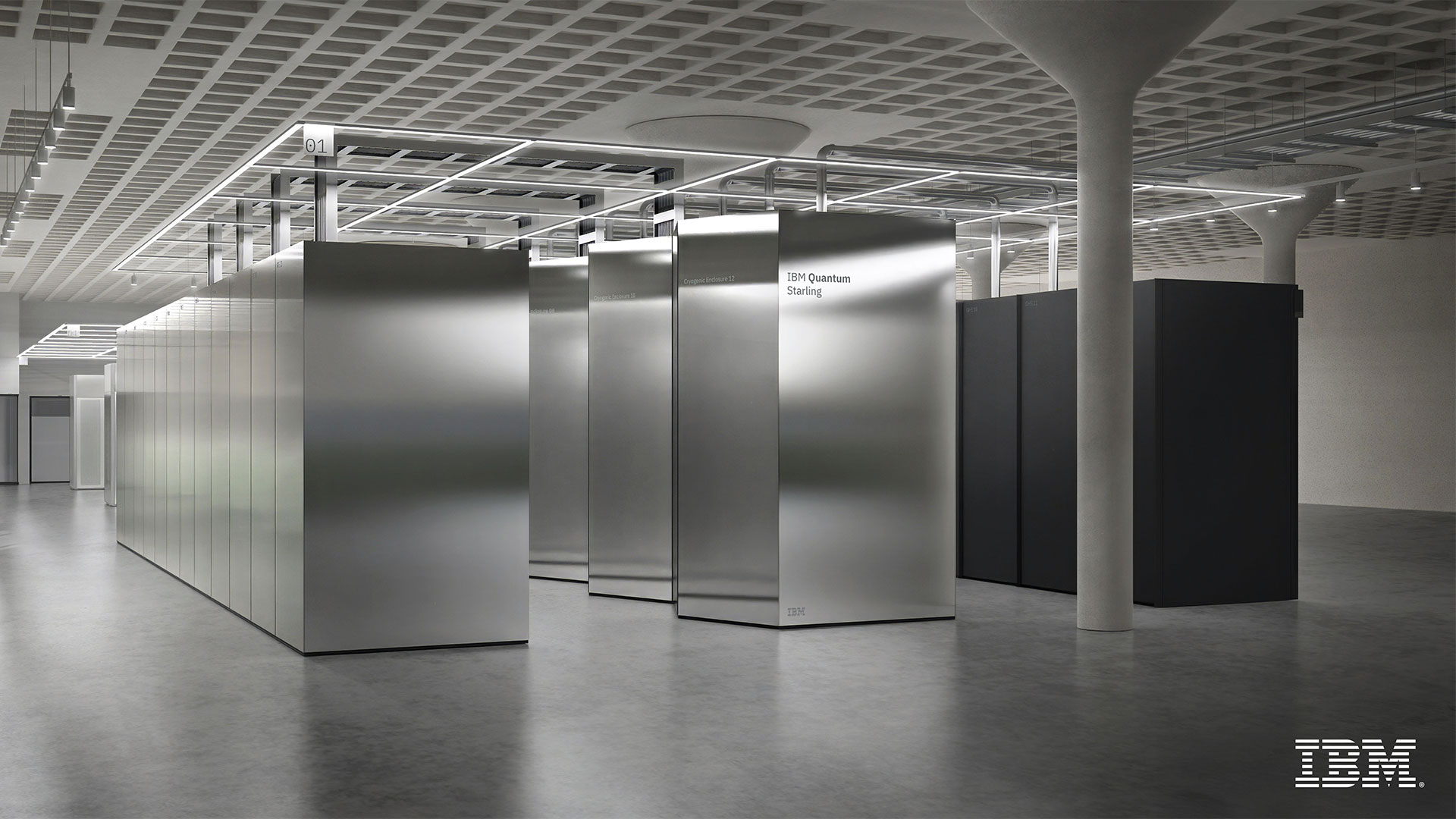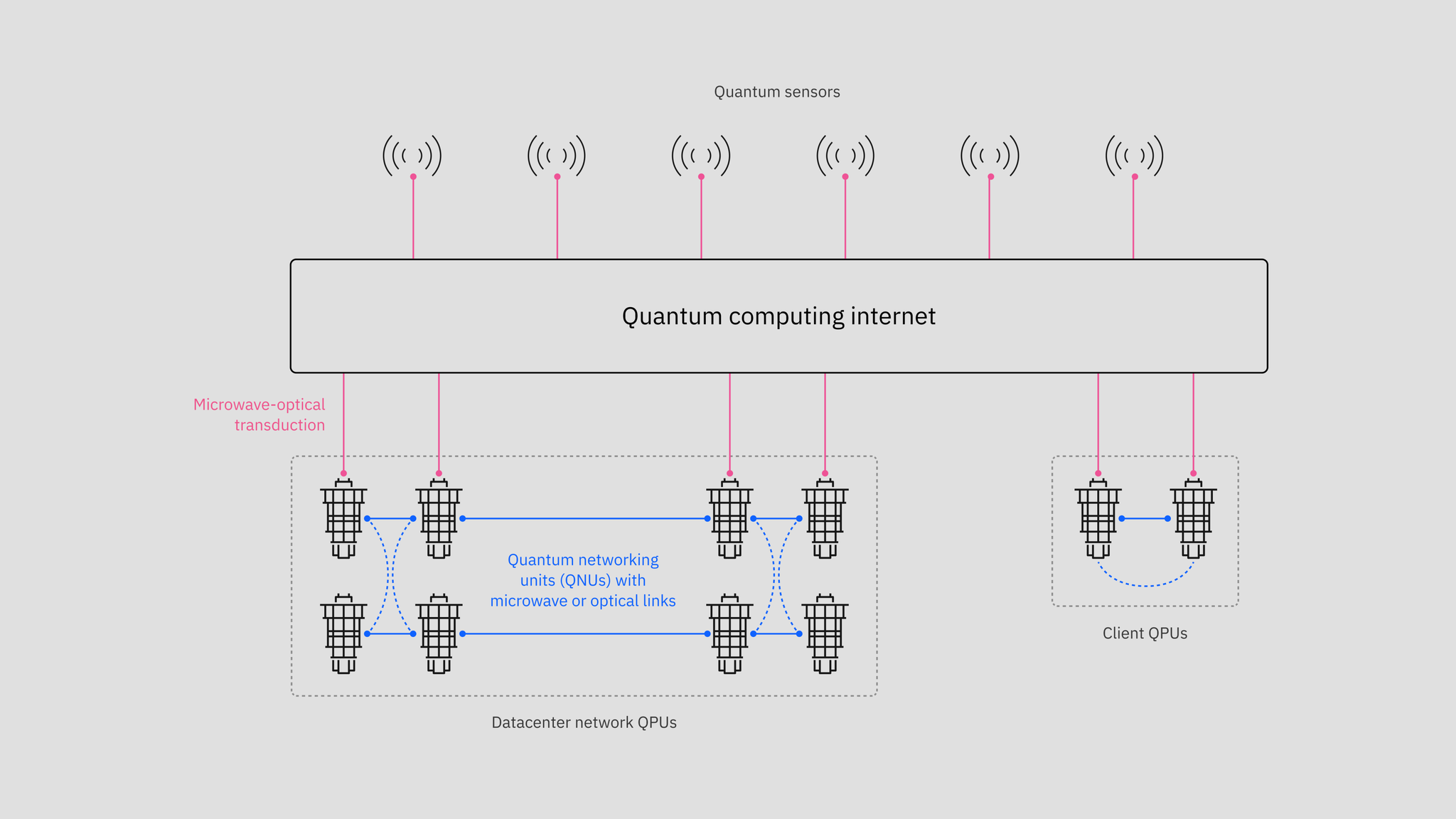IBM and Cisco agree to lay the foundations for a quantum internet — companies announce plans to build a distributed quantum computing network, linking fault-tolerant systems over long distances
Companies aim to scale fault-tolerant quantum systems into a high-performance, entangled mesh to serve as the foundation for a quantum internet.

IBM and Cisco have announced plans to jointly build a distributed quantum computing network capable of linking fault-tolerant systems over long distances. In an announcement on Thursday, November 20, the companies said they aim to demonstrate a two-machine entanglement proof-of-concept by 2030, with the ultimate goal of enabling scalable quantum workloads that span multiple sites and processors. If successful, the collaboration would mark a shift in how quantum computing resources are deployed, moving beyond single-system scale to a federated architecture capable of trillions of quantum operations.
The initiative will combine IBM’s superconducting qubit hardware with new networking infrastructure from Cisco, including microwave-optical transducers, quantum network control layers, and physical and software routing protocols designed for entangled quantum state transmission.
The proposed architecture is intended to support fault-tolerant quantum computers already in IBM’s development roadmap. But it would also require the creation of new intermediary hardware — a planned ‘Quantum Networking Unit’, or QNU — to interface with IBM’s quantum processors and translate static quantum states into flying qubits suitable for transmission via photonic links.
The architecture IBM and Cisco want to build
The duo’s ambitions will be built upon a three-tier model that splits qubit modules, networking transduction interfaces, and optical entanglement layers. IBM’s Quantum Processing Unit (QPU) roadmap projects logical fault-tolerant machines with several hundred logical qubits. each requiring thousands of physical qubits, by 2030.
Cisco’s role is to link these cryogenic environments together. Entanglement between processors would be achieved using shared photon pairs or teleportation-style protocols, with photon-based carriers transmitted over optical fiber or potentially free-space links.
Because IBM’s superconducting qubits operate in the microwave scale, while long-distance transmission favors optical frequencies, a high-efficiency transducer is needed to convert quantum information from one format to another. That device — capable of preserving coherence and phase relationships between microwave and optical domains — will have to be developed and is one of the key technical hurdles of the roadmap.
The companies say the initial milestone will be to link two independent QPUs located in separate cryogenic systems. This will test both hardware entanglement and software synchronization layers. If successful, a scaled version of the architecture would allow for modular quantum computing networks, where computation is distributed across many small fault-tolerant nodes, and entanglement is dynamically allocated based on the structure of the problem being solved.

Why networks
IBM’s vision of scalable quantum computing has already shifted from single-monolithic machines toward what it calls quantum-centric supercomputing. Under that model, quantum processors function as accelerators embedded within larger high-performance compute environments, connected to CPUs, GPUs, and shared storage via classical interfaces. However, some workloads, especially those involving chemistry, material science, or cryptographic search, will require quantum circuits with hundreds of millions or billions of gates.
Running those circuits within the coherence window of a single device is infeasible, even under optimistic hardware timelines. Instead, IBM’s roadmap assumes inter-processor coordination, allowing large algorithms to be divided into subcircuits that can run on separate QPUs. This would enable workloads that exceed the qubit count or gate fidelity of any single machine.
The QNU plays a central role here, acting as the entanglement interface between QPUs. While some early experiments in microwave-to-optical transduction have been demonstrated in lab settings — including at Fermilab’s SQMS Center, where an IBM partnership is planned — the level of fidelity and error rate required for distributed fault-tolerant computing is still years away from production.
The companies are also working on software protocols that manage entanglement routing across the network. Unlike classical networks, where bits can be duplicated and retransmitted, quantum systems depend on ephemeral, one-time-use states. That means entangled links must be established just-in-time, managed through a new class of control protocols that coordinate not only logical dataflow but also the physical movement of qubit states. Cisco says it will contribute a high-speed software protocol framework to support these operations.
Quantum computing internet
The long-term vision goes well beyond inter-device communication. IBM and Cisco say their roadmap could extend into a future quantum internet where quantum processors and entangled photonic links form a planetary-scale network of physically distributed (but logically connected) resources.
The idea of a quantum internet has been proposed before. Several research groups have published designs for node-based or repeater-style architectures, but most of those are focused on specific applications such as quantum key distribution or secure messaging. IBM’s goal, however, is to make distributed compute a viable path for running quantum algorithms that can’t fit in memory on a single machine.
If achieved, it could allow new types of applications, from supply chain modelling to real-time climate simulation using quantum-enhanced sensing. IBM has suggested that such networks could support “trillions of quantum gates” across multiple QPUs, far beyond the practical limits of even a thousand-logical-qubit monolithic device.

A long road ahead
The 2030 timeline for demonstrating a basic entanglement between two QPUs is extremely ambitious. A scalable multi-node quantum network is expected to follow just a few years later, with long-distance networking only arriving in the latter half of that decade. The quantum internet vision, where processors and entangled repeaters span entire regions, is likely more than 15 years out.
Some significant engineering challenges will need to be overcome to make this timeline a reality. No existing transducer meets the required efficiency and fidelity thresholds for scalable links. Meanwhile, distributed quantum error correction is still in development, and most of the proposed network protocols are theoretical or exist only in research simulations. There is also the challenge of integrating Cisco’s photonic networking expertise with IBM’s cryogenic systems in a way that minimizes thermal interference and maximizes link yield.
After more than a decade of pushing processor design, IBM is now turning its attention to interconnects. Cisco, for its part, is betting that quantum computing will need entirely new systems thinking, where classical routing is blended with real-time entanglement management.
It is a different way to think about infrastructure, not just as a transport layer, but as a co-designed part of the computational pipeline itself. If IBM and Cisco can build it, they’ll be reshaping what it means to run a program when the processor is no longer a single machine.
Follow Tom's Hardware on Google News, or add us as a preferred source, to get our latest news, analysis, & reviews in your feeds.


Luke James is a freelance writer and journalist. Although his background is in legal, he has a personal interest in all things tech, especially hardware and microelectronics, and anything regulatory.
